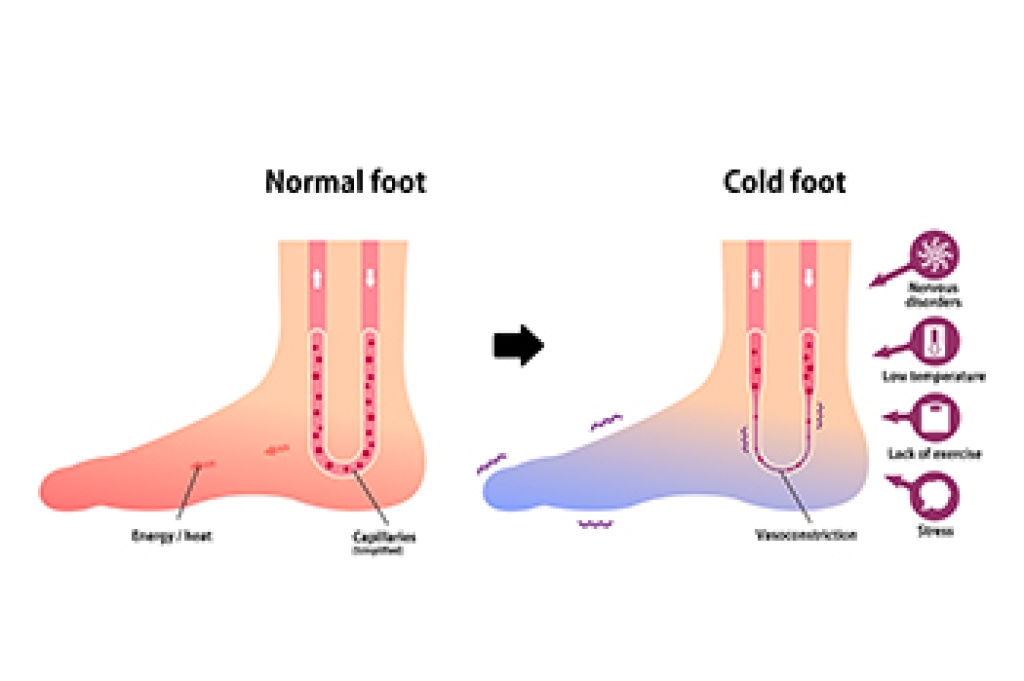Connect With Us
Blog
Blog
Easing Hammertoe Pain Through Professional Podiatric Care

Hammertoes occur when the small toes bend abnormally, creating pressure points that lead to irritation, inflammation, and difficulty wearing shoes comfortably. As the deformity progresses, corns and calluses often form over the raised joints, increasing discomfort and limiting mobility. A podiatrist can relieve pain by addressing both the symptoms and the underlying mechanics of the foot. Treatment may begin with trimming or reducing thickened skin, applying protective padding, or recommending custom orthotics to improve alignment and reduce pressure on the affected toes. In some cases, splinting or taping can help position the toe more comfortably and slow the progression of the deformity. If hammertoe pain becomes persistent or if the toe becomes rigid, minimally invasive or surgical correction may be the most effective option to restore function and relieve discomfort. If you are experiencing hammertoe pain, it is suggested that you visit a podiatrist to ensure targeted care that is designed to improve comfort and support long-term foot health.
Hammertoe
Hammertoes can be a painful condition to live with. For more information, contact one of our podiatrists from Palm Beach Foot & Ankle. Our doctors will answer any of your foot- and ankle-related questions.
Hammertoe is a foot deformity that affects the joints of the second, third, fourth, or fifth toes of your feet. It is a painful foot condition in which these toes curl and arch up, which can often lead to pain when wearing footwear.
Symptoms
- Pain in the affected toes
- Development of corns or calluses due to friction
- Inflammation
- Redness
- Contracture of the toes
Causes
Genetics – People who are genetically predisposed to hammertoe are often more susceptible
Arthritis – Because arthritis affects the joints in your toes, further deformities stemming from arthritis can occur
Trauma – Direct trauma to the toes could potentially lead to hammertoe
Ill-fitting shoes – Undue pressure on the front of the toes from ill-fitting shoes can potentially lead to the development of hammertoe
Treatment
Orthotics – Custom made inserts can be used to help relieve pressure placed on the toes and therefore relieve some of the pain associated with it
Medications – Oral medications such as anti-inflammatories or NSAIDs could be used to treat the pain and inflammation hammertoes causes. Injections of corticosteroids are also sometimes used
Surgery – In more severe cases where the hammertoes have become more rigid, foot surgery is a potential option
If you have any questions, please feel free to contact our offices located in Boynton Beach, Palm Beach Gardens, and West Palm Beach, FL . We offer the newest diagnostic and treatment technologies for all your foot care needs.
Reasons for Cold Feet

Cold feet are a common concern and may occur when blood flow or nerve function is affected. Exposure to cold temperatures can cause blood vessels to narrow, reducing warmth in the feet. Stress may also trigger vascular changes that limit circulation and contribute to a cold sensation. Poor circulation from vascular conditions can prevent enough warm blood from reaching the feet, leading to persistent coldness and discomfort. Additionally, nerve disorders may interfere with normal temperature sensation, making feet feel cold even when they are warm to the touch. Symptoms may include numbness, tingling, color changes, or an aching feeling in the feet and toes. A podiatrist can help by evaluating circulation, nerve health, and foot structure to identify the underlying cause. If your cold feet are accompanied by pain or numbness, it is suggested that you consult a podiatrist who can determine what the cause is, and offer effective relief tips.
Foot Pain
Foot pain can be extremely painful and debilitating. If you have a foot pain, consult with one of our podiatrists from Palm Beach Foot & Ankle. Our doctors will assess your condition and provide you with quality foot and ankle treatment.
Causes
Foot pain is a very broad condition that could be caused by one or more ailments. The most common include:
- Bunions
- Hammertoes
- Plantar Fasciitis
- Bone Spurs
- Corns
- Tarsal Tunnel Syndrome
- Ingrown Toenails
- Arthritis (such as Gout, Rheumatoid, and Osteoarthritis)
- Flat Feet
- Injury (from stress fractures, broken toe, foot, ankle, Achilles tendon ruptures, and sprains)
- And more
Diagnosis
To figure out the cause of foot pain, podiatrists utilize several different methods. This can range from simple visual inspections and sensation tests to X-rays and MRI scans. Prior medical history, family medical history, and any recent physical traumatic events will all be taken into consideration for a proper diagnosis.
Treatment
Treatment depends upon the cause of the foot pain. Whether it is resting, staying off the foot, or having surgery; podiatrists have a number of treatment options available for foot pain.
If you have any questions, please feel free to contact our offices located in Boynton Beach, Palm Beach Gardens, and West Palm Beach, FL . We offer the newest diagnostic and treatment technologies for all your foot care needs.
Sever’s Disease and How Early Care Supports Healing

Sever’s disease is a common cause of heel pain in growing children and often appears during growth spurts when the heel bone develops faster than the surrounding soft tissues. Symptoms may include stiffness, tenderness at the back of the heel, limping after activity, and swelling that can make the heel look slightly puffy or irritated. It may feel like a deep ache or sharp discomfort during running and jumping, and the child may avoid weight bearing on the affected side. Causes often relate to repetitive stress from sports, tight calf muscles, or biomechanical issues such as flat feet or high arches. A podiatrist can begin by assessing the child’s gait, examining the heel, and ruling out other conditions. Early diagnosis leads to effective treatment options, such as activity modification, heel cushions, stretching programs, and custom orthotics to reduce strain. Because timely care supports proper healing and comfort, it is suggested that you schedule an appointment with a podiatrist for effective relief tips.
Sever's disease often occurs in children and teens. If your child is experiencing foot or ankle pain, see one of our podiatrists from Palm Beach Foot & Ankle. Our doctors can treat your child’s foot and ankle needs.
Sever’s Disease
Sever’s disease is also known as calcaneal apophysitis, which is a medical condition that causes heel pain I none or both feet. The disease is known to affect children between the ages of 8 and 14.
Sever’s disease occurs when part of the child’s heel known as the growth plate (calcaneal epiphysis) is attached to the Achilles tendon. This area can suffer injury when the muscles and tendons of the growing foot do not keep pace with bone growth. Therefore, the constant pain which one experiences at the back of the heel will make the child unable to put any weight on the heel. The child is then forced to walk on their toes.
Symptoms
Acute pain – Pain associated with Sever’s disease is usually felt in the heel when the child engages in physical activity such as walking, jumping and or running.
Highly active – Children who are very active are among the most susceptible in experiencing Sever’s disease, because of the stress and tension placed on their feet.
If you have any questions, please feel free to contact our offices located in Boynton Beach, Palm Beach Gardens, and West Palm Beach, FL . We offer the newest diagnostic and treatment technologies for all your foot care needs.
When Hammertoe Surgery Becomes Necessary

Hammertoe is a deformity where one or more toes become bent at the middle joint, creating a curled or elevated position that can cause pain, pressure, and difficulty walking. This condition often worsens over time due to muscle imbalance, tight footwear, or structural issues in the foot. Hammertoe surgery may be needed when conservative care no longer relieves discomfort or when the toe becomes rigid and difficult to straighten. Hammertoe surgery aims to realign the joint, release tight tissues, or remove a small portion of bone to restore proper toe function. A podiatrist can assess the severity of the deformity and guide you toward the most effective treatment plan. If you struggle with a painful hammertoe, it is suggested that you schedule a podiatry visit to explore your options, which may include surgery for relief.
Foot surgery is sometimes necessary to treat a foot ailment. To learn more, contact one of our podiatrists of Palm Beach Foot & Ankle. Our doctors will assist you with all of your foot and ankle needs.
When Is Surgery Necessary?
Foot and ankle surgery is generally reserved for cases in which less invasive, conservative procedures have failed to alleviate the problem. Some of the cases in which surgery may be necessary include:
- Removing foot deformities like bunions and bone spurs
- Severe arthritis that has caused bone issues
- Cosmetic reconstruction
What Types of Surgery Are There?
The type of surgery you receive will depend on the nature of the problem you have. Some of the possible surgeries include:
- Bunionectomy for painful bunions
- Surgical fusion for realignment of bones
- Neuropathy decompression surgery to treat nerve damage
Benefits of Surgery
Although surgery is usually a last resort, it can provide more complete pain relief compared to non-surgical methods and may allow you to finally resume full activity.
Surgical techniques have also become increasingly sophisticated. Techniques like endoscopic surgery allow for smaller incisions and faster recovery times.
If you have any questions, please feel free to contact our offices located in Boynton Beach, Palm Beach Gardens, and West Palm Beach, FL . We offer the newest diagnostic and treatment technologies for all your foot care needs.
Blog Archives
- 2026
- 2025
- 2024
- 2023
- 2022
- 2021

